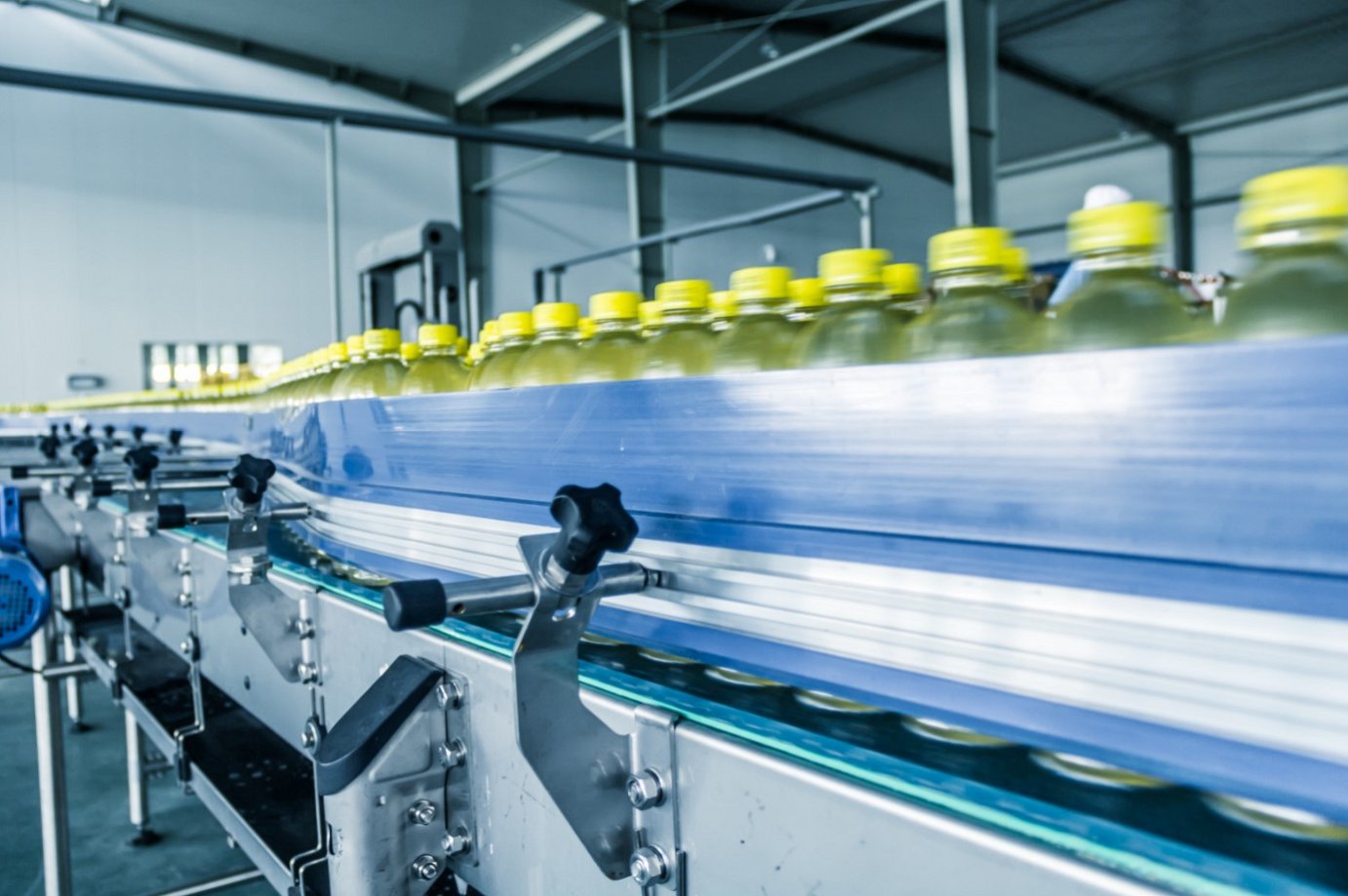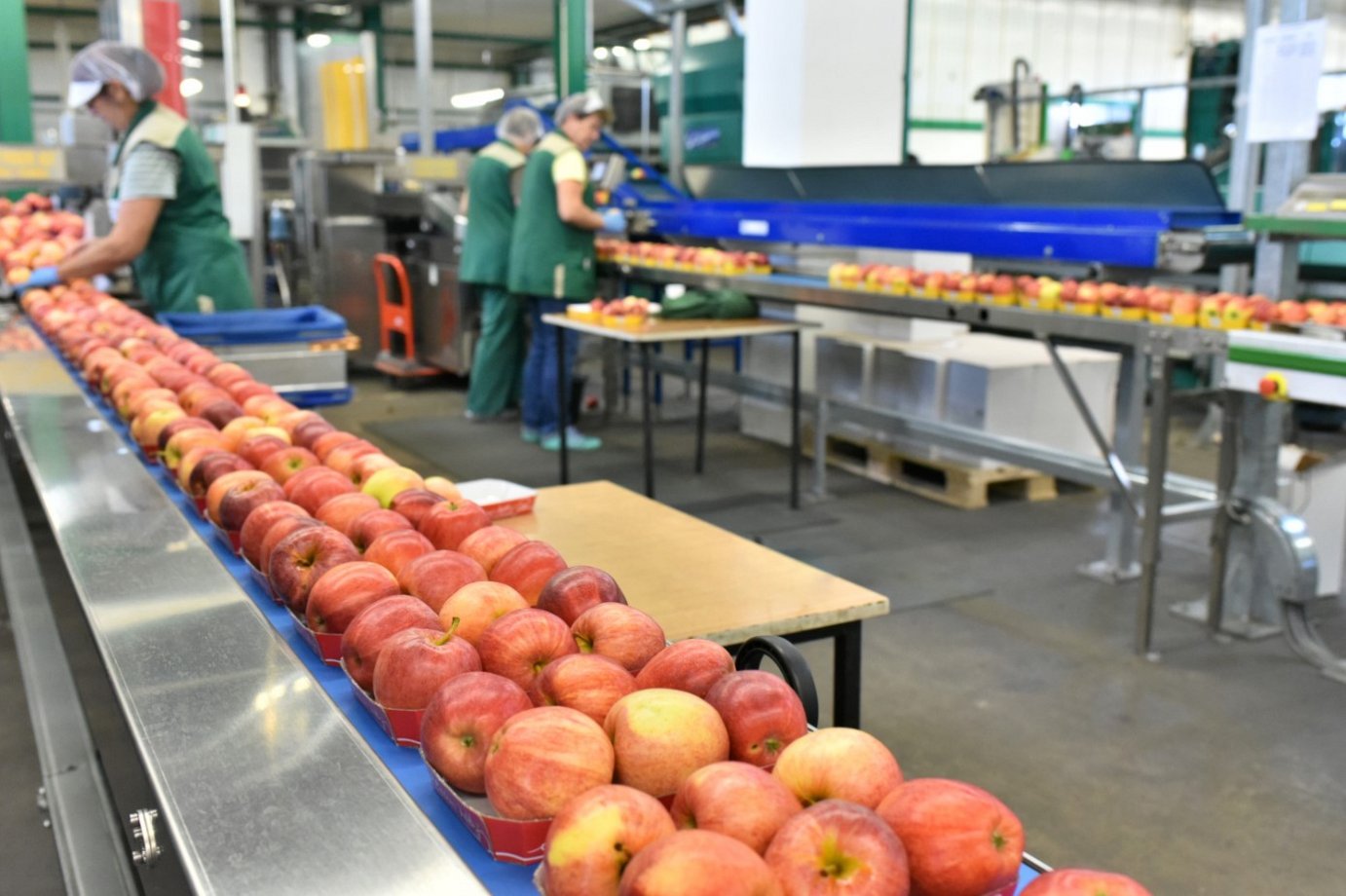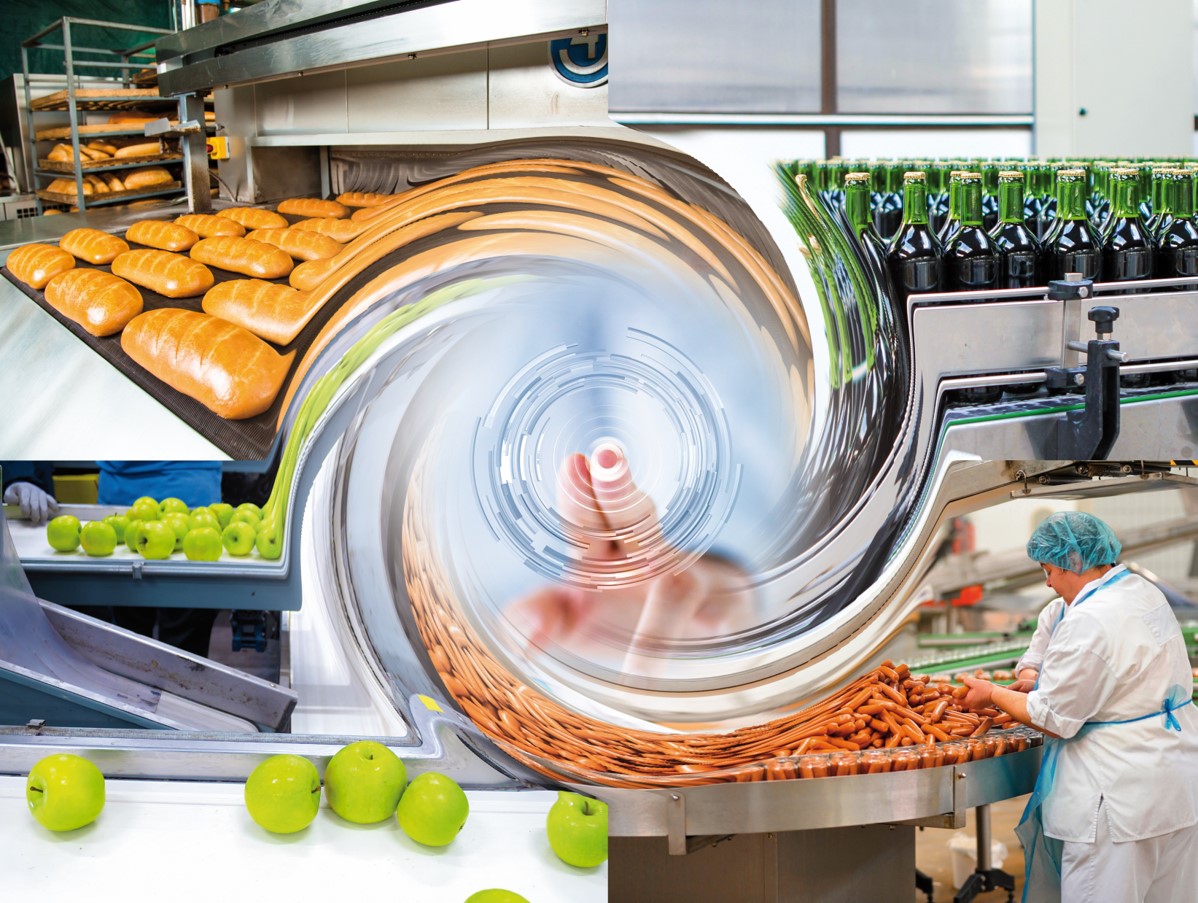
- Mehr:
- images/icons/icon_mail.png, vertrieb@sys-pro.de, mailto:vertrieb@sys-pro.de
- images/icons/icon_telefon.png, +49 30 56 592 0, tel:+4930565920
- images/icons/icon_newsletter.png, Newsletter, https://www.sys-pro.de/en/newsletter
- Oberer Text - Links:
In order to optimally prepare for the step towards highly autonomous Industry 4.0 processes, food producers need to rethink their approach to stock units. Internal goods logistics processes include not only raw materials and products, but also storage aids, transport containers and packaging objects as well as empties management within the company.
- Oberer Text - Rechts:
In addition, the increasing individualisation of orders is leading to a trend towards ever smaller transport units. As a result, mixed pallets are increasingly becoming the norm in shipping.
- Unterer Text - Links:
As early as 2018, we extended the proSystem solution framework so that the consistent mapping of multidimensional stock units (containers) is possible without any problems.
- Unterer Text - Rechts: This means that products, storage aids, packaging and transport units can be recorded, identified and tracked throughout the entire production process, both in their combination and at individual object level. You are thus optimally prepared: for the Industry 4.0 recognition of stock units via RFID or scanner.
- Linkliste - Hintergrund:

- Linkliste - Links:
- Manufacturing Execution System (MES), https://www.sys-pro.de/en/solutions/food-production-solutions/manufacturing-execution-system-mes,
- Lean Production with Microservices, https://www.sys-pro.de/en/solutions/food-production-solutions/lean-production-with-microservices,
- Batches and origin, https://www.sys-pro.de/en/solutions/food-production-solutions/batches-and-origin,
- Kachel - Titel: Our Case Studies:
- Kachel - Inhalt:
- Winery Schloss Fels uses "proFood", images/persona/weinkeller.jpg, rsform12
- The Spar Effect, images/neu/SPAR_use_case.jpeg, rsform8
- Kurztext: Die Industrie-4.0-fähige Erweiterung für zusammengehörige Items
Fit for today and tomorrow: flexible container logistics

- Mehr:
- images/icons/icon_mail.png, vertrieb@sys-pro.de, mailto:vertrieb@sys-pro.de
- images/icons/icon_telefon.png, +49 30 56 592 0, tel:+4930565920
- images/icons/icon_newsletter.png, Newsletter, https://www.sys-pro.de/en/newsletter
- Oberer Text - Links:
Batch formation to trace the origin of a raw material has long been an indispensable core process in food production. In today's increasingly networked production and supply chains, it is particularly important to map this transparency across systems and partners.
- Oberer Text - Rechts:
In proSystem two methods are available for this purpose: closed batch tracking and integrated HKN inheritance. The latter implements an inheritance logic for HKN articles from goods receipt in production, so that the origin of the product can be determined at the push of a button in each subsequent production stage. The advantage over closed batch tracking is that the process is better suited for time-critical applications such as packaging and labelling.
- Unterer Text - Links:
In the respective HKN system number (HKN_TC) different strategies of the retail chains can be mapped, which are then maintained as article characteristics in the article itself. In this way, proSystem also offers the possibility of setting up specific HKN criteria for different customers. Our solutions are based on the fTRACE system of the tracing specialist GS1. Using this system, all origin data for a delivery can be retrieved for a supplier delivery note. fTRACE is based on GS1's own platform, which can be easily integrated into other IT systems.
- Unterer Text - Rechts: The system uses GLNs (Global Location Numbers) and GTINs (Global Trade Identification Numbers) for the unique identification of supply chain participants and products, and EPCIS (Electronic Product Code Information Services) for the standardized transmission of batch-based origin information. In addition, the principle of "control of compliance with indications of origin before the start of production" contributes to a significant reduction in misconduct and incorrect deliveries, which in turn significantly reduces the number of returns from retail chains.
- Linkliste - Hintergrund:

- Linkliste - Links:
- Manufacturing Execution System (MES), https://www.sys-pro.de/en/solutions/food-production-solutions/manufacturing-execution-system-mes,
- Lean Production with Microservices, https://www.sys-pro.de/en/solutions/food-production-solutions/lean-production-with-microservices,
- Multidimensional Stock Units , https://www.sys-pro.de/en/solutions/food-production-solutions/multidimensional-stock-units,
- Kachel - Titel: Our Case Studies:
- Kachel - Inhalt:
- Winery Schloss Fels uses "proFood", images/persona/weinkeller.jpg, rsform12
- The Spar Effect, images/neu/SPAR_use_case.jpeg, rsform8
- Kurztext: So realisieren Sie die perfekte Produktverfolgung
Food safety on the cutting edge

- Mehr:
- images/icons/icon_mail.png, vertrieb@sys-pro.de, mailto:vertrieb@sys-pro.de
- images/icons/icon_telefon.png, +49 30 56 592 0, tel:+4930565920
- images/icons/icon_newsletter.png, Newsletter, https://www.sys-pro.de/en/newsletter
- Oberer Text - Links:
The trend to break down complex system functions into any number of networked microservices is particularly topical today due to the breakthrough of cloud infrastructures. However, the concept is much older and was first implemented at syspro in 2011.
- Oberer Text - Rechts:
The benefits of switching to virtual mini-applications are particularly high in production solutions. This is because a conventional application never achieves the necessary flexibility at this level to adapt to variable components in the process, to adapt precisely to new specific scenarios again and again, and to deal intelligently with new categories of faults and errors.
- Unterer Text - Links:
Changing a powerful application each time for individualization and other adjustments would be neither efficient nor safe. Instead, we rely on independent microservices that communicate with each other in close networking via standardized interfaces. Each of these services autonomously performs a small, precisely defined task.
- Unterer Text - Rechts: An example of this principle is our data acquisition terminal proDet, in which individual microservices map each individual step of the process. In the superordinate proDet framework the process logic is established via the sequence of the process steps and furthermore the intercommunication with devices, remote services (services or applications) and user inputs is configured. This structure has an invaluable advantage for customers: The user can design his processes flexibly, stable and user-optimized.
- Linkliste - Hintergrund:

- Linkliste - Links:
- Manufacturing Execution System (MES), https://www.sys-pro.de/en/solutions/food-production-solutions/manufacturing-execution-system-mes,
- Multidimensional Stock Units, https://www.sys-pro.de/en/solutions/food-production-solutions/multidimensional-stock-units,
- Batches and origin, https://www.sys-pro.de/en/solutions/food-production-solutions/batches-and-origin,
- Kachel - Titel: Our Case Studies:
- Kachel - Inhalt:
- Winery Schloss Fels uses "proFood", images/persona/weinkeller.jpg, rsform22
- The Spar Effect, images/neu/SPAR_use_case.jpeg, rsform18
- Best software for best taste at Greisinger, images/persona/greisinger.jpg, rsform33
- Kurztext: Schlanke Dienste statt komplexer Anwendungen
Lean, cloud-ready and flexible: Microservices for process data acquisition

- Mehr:
- ,
 vertrieb@sys-pro.de, mailto:vertrieb@sys-pro.de
vertrieb@sys-pro.de, mailto:vertrieb@sys-pro.de - ,
 +49 30 56 592 0, tel:+4930565920
+49 30 56 592 0, tel:+4930565920 - ,
 Newsletter, https://www.sys-pro.de/en/newsletter
Newsletter, https://www.sys-pro.de/en/newsletter
- ,
- Oberer Text - Links:
Depending on the product, the production of food can be a highly variable, highly sensitive or extremely time-critical process - and sometimes everything at the same time. On-schedule deliveries and error-free production represent a real challenge.
- Oberer Text - Rechts:
Especially for the realization of intelligent recipe adjustments, the handling of recipe yields and by-products as well as the separation between mass and individual products, process solutions are required that are specifically tailored to your industry.
- Unterer Text - Links:
The modular solutions of proSystem MES FOOD are optimally prepared for standard tasks and can also deal flexibly with the individual conditions of your production. With the right combination of modules and functions they keep your processes together efficiently and situation-oriented.
- Unterer Text - Rechts:
They are particularly suitable for processes that are characterized by great variability - here they ensure quality, safety and throughput at each station while maintaining an overview of the entire process. At the same time, proSystem solution modules communicate smoothly with higher-level ERP infrastructures such as SAP.
- Linkliste - Hintergrund:

- Linkliste - Links:
- Meat and Sausage Production, https://www.sys-pro.de/en/branch-competence/food/meat-product-manufacturing,
- Pastries, https://www.sys-pro.de/en/branch-competence/food/pastries,
- Coffee and Tea, https://www.sys-pro.de/en/branch-competence/food/coffee-and-tea,
Production control with proSystem MES FOOD: the optimal process

- Mehr:
- ,
 vertrieb@sys-pro.de, mailto:vertrieb@sys-pro.de
vertrieb@sys-pro.de, mailto:vertrieb@sys-pro.de - ,
 +49 30 56 592 0, tel:+4930565920
+49 30 56 592 0, tel:+4930565920 - ,
 Newsletter, https://www.sys-pro.de/en/newsletter
Newsletter, https://www.sys-pro.de/en/newsletter
- ,
- Oberer Text - Links:
The competitive pressure in the food industry continues to increase, the observation by the consumer public is noticeable - and parallel to this, business is turning faster and faster and the networking in production, supply and trade chains is getting deeper and deeper.
- Oberer Text - Rechts:
It is particularly important for medium-sized producers to remain able to cope with this pressure in the future. Systems and solutions that score with the key factor of the coming years provide the necessary relief: intelligence.
- Unterer Text - Links:
In the food industry, diversity is the order of the day. Working with natural products, time-critical processes, highly sensitive action chains and variable recipes requires solutions with full flexibility.
- Unterer Text - Rechts:
Come towards us. Our experts have the right solution for your problem.
- Linkliste - Titel: Our food solutions:
- Linkliste - Hintergrund:

- Linkliste - Links:
- Manufacturing Execution System (MES), https://www.sys-pro.de/en/solutions/food-production-solutions/manufacturing-execution-system-mes,
- Batches and Origin, https://www.sys-pro.de/en/solutions/food-production-solutions/batches-and-origin,
- Multidimensional Stock Units, https://www.sys-pro.de/en/solutions/food-production-solutions/multidimensional-stock-units,
- Lean Production with Microservices, https://www.sys-pro.de/en/solutions/food-production-solutions/lean-production-with-microservices,
- Kachel - Titel: Our Case Studies:
- Kachel - Inhalt:
- The Spar Effect, images/neu/SPAR_use_case.jpeg, rsform18
- Winery Schloss Fels uses "proFood" , images/persona/weinkeller.jpg, rsform22
- Best software for best taste at Greisinger, images/persona/greisinger.jpg, rsform33
